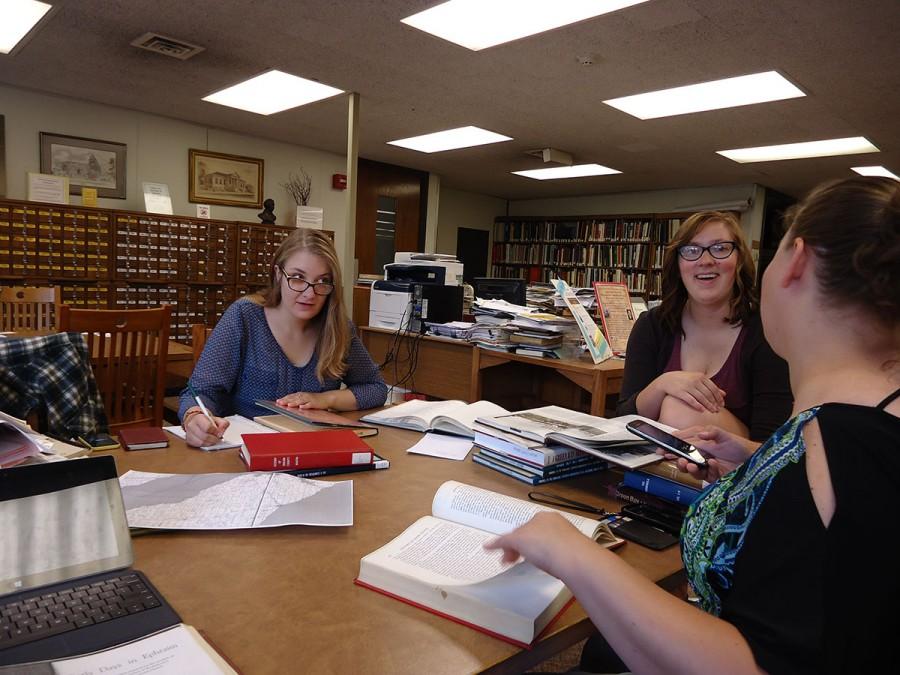Lost Words: preserving a language
UW- Eau Claire students look to revive a dying language
More stories from Lauren French
Photo by SUBMITTED
Endangered. Dying. Extinct.
When folks hear those words, they might think of tigers, pandas or other animals on the World Wildlife Fund’s list of endangered species.
But what about something a bit closer to home?
Along the east edge of Lake Michigan and nestled within the bustling Green Bay area lies a different kind of endangered subject: language.
It’s called Walloon, and there are only about 30 speakers left in Wisconsin. Originally from Belgium and similar to the French language, Walloon first arrived in the dairy state with a set of immigrants in the mid-1800s. After three generations of healthy speaking, Walloon began to die out in lieu of the English language and American culture.
Walloon was fairly hidden within the Door County community until a UW-Eau Claire French instructor stumbled upon the language while in search of material for one of his classes. When Dr. Kelly Biers couldn’t find much information on Walloon, a research project was born.
Now, Biers and three Eau Claire students are working to preserve the dying language and the culture of the people who speak it.
“The language we speak is really closely tied with who we interact with, where we come from,” Biers said. “… It’d be really unfortunate if this language, which contains so much history and personality … were to be totally forgotten.”
Challenge and triumph
Now-seniors Kristina Hoyt, Elizabeth Ehrenberg and Madeline Tautges, united in their knowledge of French, volunteered to take on the project with Dr. Biers last fall.
The main goal, they said, is to make sure Walloon doesn’t fade from the area’s history. To do this, the team had to research the origin of the language’s appearance in Wisconsin, the history of the people who brought it here and record the people who still speak it today.
After the initial research, the team set out to make contact with Walloon speakers in the Door County area to record them speaking.
This, the team said, is where they encountered problems. Biers said the youngest Walloon speaker is around 70 years old, so a lot of speakers were ill or hadn’t spoken the language in years since the person they usually spoke with had died.
However, they said they noticed an overarching theme: Walloon speakers didn’t understand why people outside their community cared.
“The greater community is reluctant to believe that they’re somehow special,” Hoyt said.
It took some convincing, but Tautges said the research team was able to show the community of Walloon speakers that they were genuinely interested in helping to preserve the language and culture.
Biers said they’ve built a good base of contacts, and they’re considering a partnership with a local organization to create a Belgian Heritage Center in Brussels.
Biers, Ehrenberg, Tautges and Hoyt are also working on coming up with a written system for Walloon, as it’s traditionally just a spoken language.
Personal investment
For the student researchers, diving into the Walloon language and culture is more than a resume-builder. The research signifies discovering and preserving personal heritage, experiencing something new and helping a community hold on to their past.
“It was really rewarding just to be able to see something so different in a space I’m familiar with,” Ehrenberg said.
Tautges said her ancestors are from Belgium and would have spoken Walloon when they first came to the United States in the 1850s. Her mother always told her Walloon was a dialect of French and not a separate language of its own, Tautges said. She said this project was a way for her to discover more about her own ancestry.
Tautges said language is important in conserving a culture because it sets a community apart from others.
“(Language) is really the basis of people’s connection with their own community,” Tautges said. … It gives them something to show where they came from.”
Hoyt, on the other hand, said she relates to this project because her family experienced cultural loss in similar ways to those who speak Walloon.
Hoyt descends from two different Native American tribes and said she grew up without a sense of her own heritage. She said she can trace her family back to her great grandmother from the Ojibwe tribe, who was adopted by the white governor of Minnesota. Hoyt said she didn’t even know she had any connection to Native American culture until four or five years ago.
“It’s important for me to really help another culture not lose its identity,” Hoyt said, “because it really kind of happened to me.”

